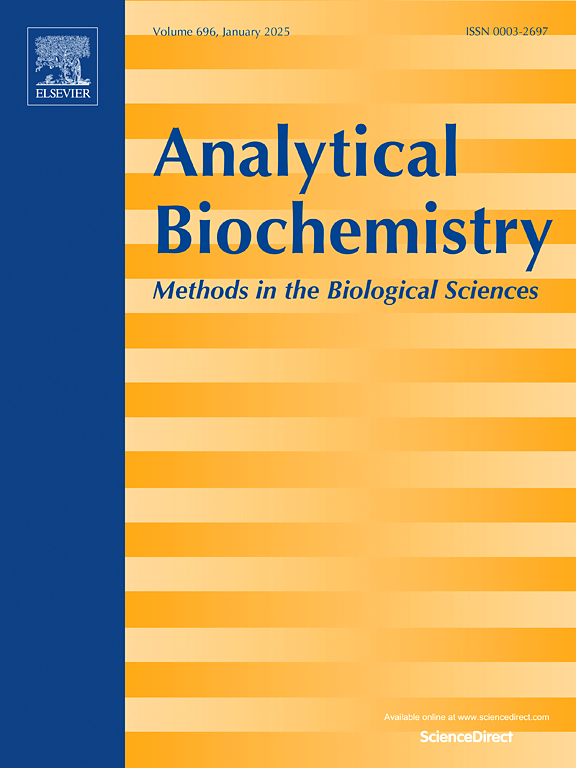通过使用实时和便携式传感器快速和现场检测粮食作物病害,确保粮食安全。
IF 2.5
4区 生物学
Q2 BIOCHEMICAL RESEARCH METHODS
引用次数: 0
摘要
全球人口的不断增加和对粮食生产的需求不断增加,需要采用创新方法来管理植物病害造成的作物损失。传统的诊断方法常常受到耗时协议、缺乏实时监测和需要专门实验室基础设施的限制。同时,传感器技术已成为植物病害早期检测和诊断的重要工具。传感器技术对植物病害的诊断具有快速、实时、高灵敏度和特异性等特点。本文综述了基于生物识别元件和传感器类型的各种生物传感器。它强调了纳米技术在通过改善导电性、表面反应性和小型化来增强生物传感器性能方面的关键作用,特别是在植物病害检测方面。此外,检测病原体诱导的挥发性有机化合物(VOCs)的电子鼻(E-nose)传感器因其在非侵入性早期诊断中的潜力而受到重视。综述了纳米生物传感器在农药残留、毒素和农用化学品检测中的应用。金属氧化物纳米颗粒(MONPs)由于其独特的结构和电子特性,在农业和环境修复中发挥着多功能作用。此外,对光电催化(PEC)的最新进展进行了研究,该技术结合光和外加电压通过活性氧(ROS)降解有毒污染物。最后,利用生物素-链霉亲和素相互作用与核酸扩增相结合,提出了用于快速检测食品和环境样品中黄曲霉毒素B1的超灵敏滚动圈扩增点护理测试(RCA-POCT)。面对挑战和未来前景,强调这些技术在精准农业中的变革潜力,通过快速的现场检测,使农民、研究人员和科学家受益。本文章由计算机程序翻译,如有差异,请以英文原文为准。

Ensuring food security through rapid and in-field detection of diseases in food crops using real time and portable sensors
The increasing global population and rising demands for food production require innovative approaches for managing crop losses caused by plant diseases. Conventional diagnostic methods are often limited by time-consuming protocols, lack of real-time monitoring, and the need for specialized laboratory infrastructure. Meanwhile, sensor technology has emerged as a promising tool for early detection and diagnosis of plant diseases. Sensor technology offers rapid, real-time, high sensitivity, and specificity in diagnosing plant diseases. This review comprehensively presents various biosensors based on biorecognition elements and transducer types. It emphasizes the pivotal role of nanotechnology in enhancing biosensor performance through improved conductivity, surface reactivity, and miniaturization, particularly for plant disease detection. Additionally, electronic nose (E-nose) sensors detecting pathogen-induced volatile organic compounds (VOCs) are highlighted for their potential in non-invasive, early-stage diagnosis. The review also discusses the application of nanobiosensors in agriculture for detecting pesticide residues, toxins, and agrochemicals. Metal oxide nanoparticles (MONPs) are recognized for their multifunctional roles in agriculture and environmental remediation, owing to their unique structural and electronic properties. Furthermore, recent advances in photoelectrocatalysis (PEC), which combines light and applied voltage to degrade toxic pollutants via reactive oxygen species (ROS), are examined. Finally, the ultrasensitive Rolling Circle Amplification-Enabled Point-of-Care Test (RCA-POCT) for rapid detection of aflatoxin B1 in food and environmental samples is presented, utilizing biotin-streptavidin interactions coupled with nucleic acid amplification. Alon with challenges and future prospects, underscoring the transformative potential of these technologies in precision agriculture through rapid, in-field detection benefiting farmers, researchers, and scientists.
求助全文
通过发布文献求助,成功后即可免费获取论文全文。
去求助
来源期刊

Analytical biochemistry
生物-分析化学
CiteScore
5.70
自引率
0.00%
发文量
283
审稿时长
44 days
期刊介绍:
The journal''s title Analytical Biochemistry: Methods in the Biological Sciences declares its broad scope: methods for the basic biological sciences that include biochemistry, molecular genetics, cell biology, proteomics, immunology, bioinformatics and wherever the frontiers of research take the field.
The emphasis is on methods from the strictly analytical to the more preparative that would include novel approaches to protein purification as well as improvements in cell and organ culture. The actual techniques are equally inclusive ranging from aptamers to zymology.
The journal has been particularly active in:
-Analytical techniques for biological molecules-
Aptamer selection and utilization-
Biosensors-
Chromatography-
Cloning, sequencing and mutagenesis-
Electrochemical methods-
Electrophoresis-
Enzyme characterization methods-
Immunological approaches-
Mass spectrometry of proteins and nucleic acids-
Metabolomics-
Nano level techniques-
Optical spectroscopy in all its forms.
The journal is reluctant to include most drug and strictly clinical studies as there are more suitable publication platforms for these types of papers.
 求助内容:
求助内容: 应助结果提醒方式:
应助结果提醒方式:


